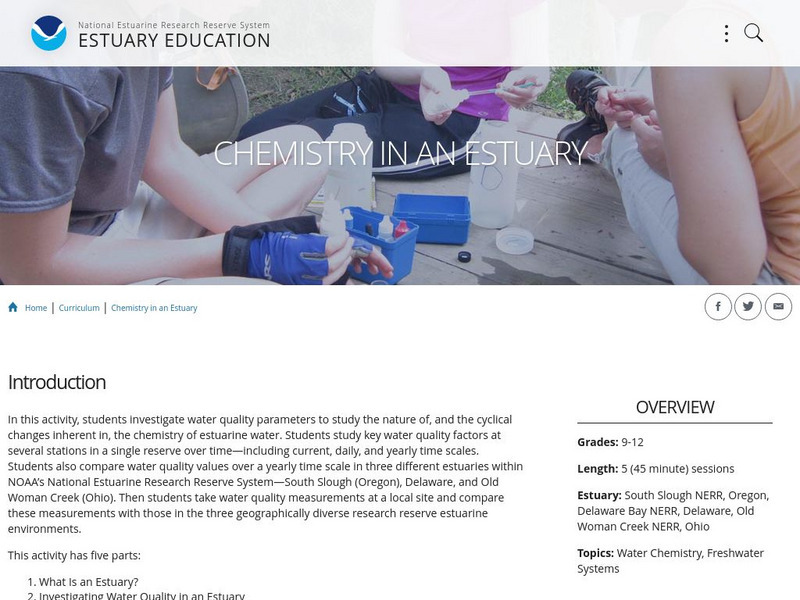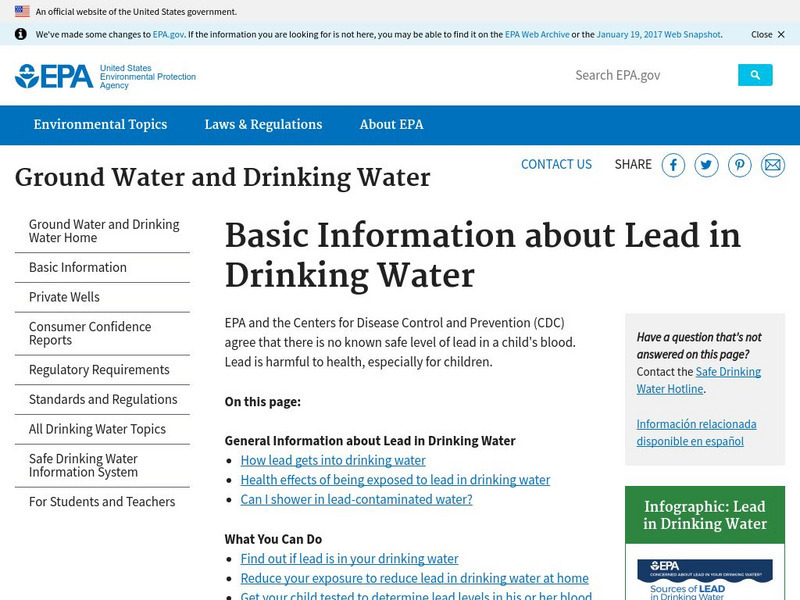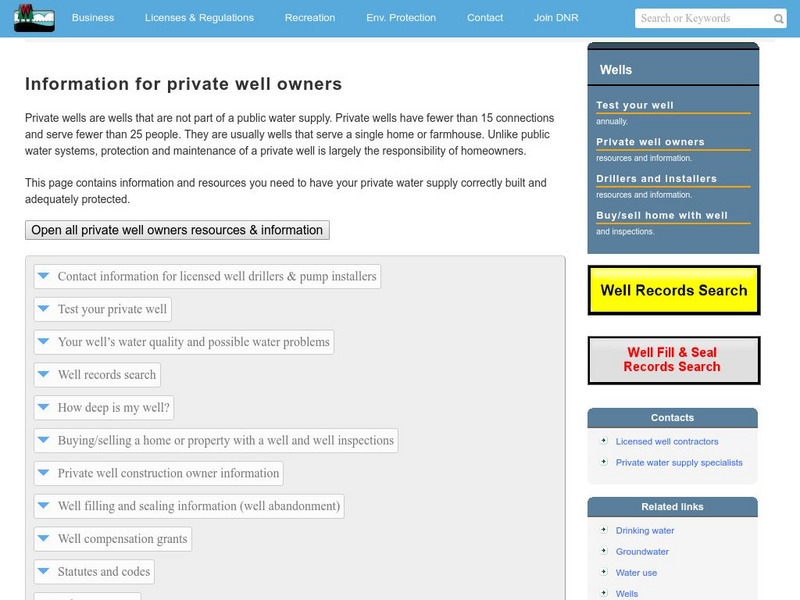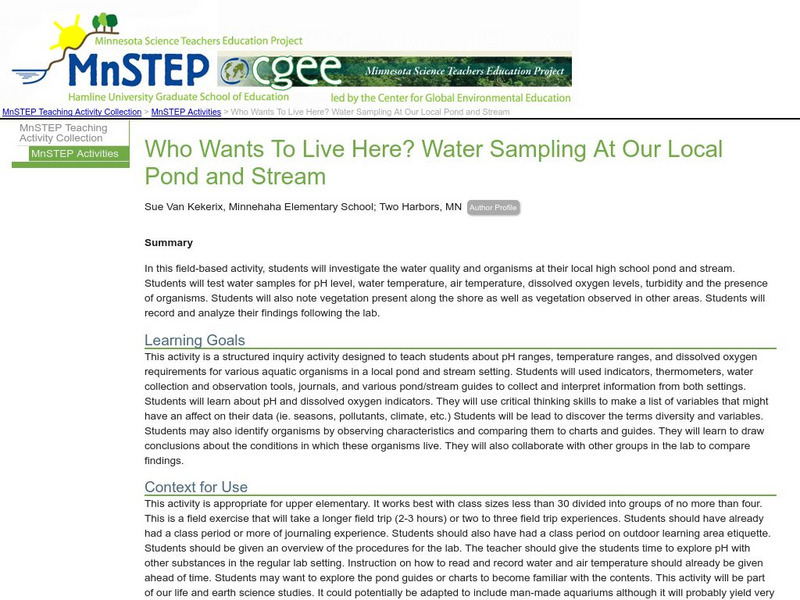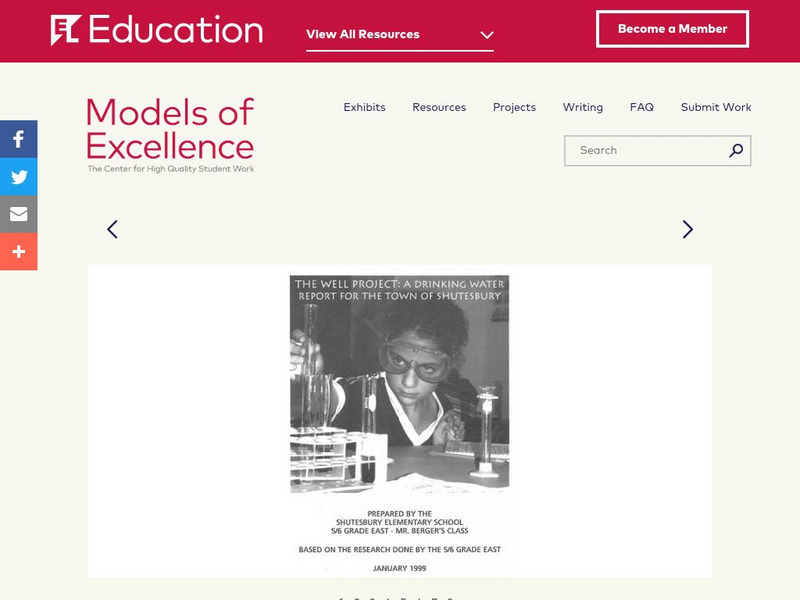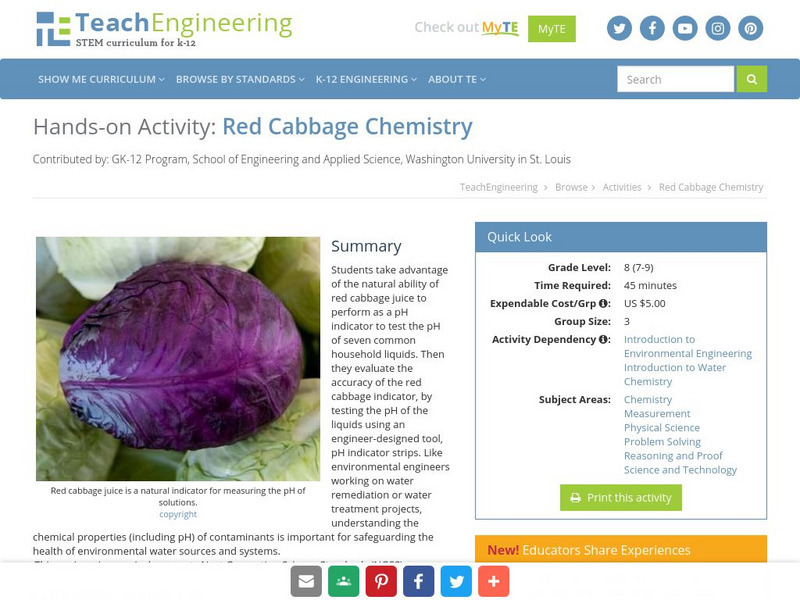Hi, what do you want to do?
TeachEngineering
Teach Engineering: Should I Drink That?
Students perform the first steps that environmental engineers do to determine water quality - sampling and analysis. Student teams measure the electrical conductivity of four water samples using teacher-made LED conductivity testers and...
NOAA
Noaa: Estuaries 101 Curriculum: Chemistry in an Estuary
This activity introduces students to the complex chemistry of estuarine water. Students investigate how chemical and physical water quality factors-pH, temperature, dissolved oxygen, and salinity-change and interact over varying time...
EL Education
El Education: Stream Water Quality Report
Middle school students partner with undergraduate students at a local college to test the quality of the surface water in their town. Students gather data and research to write a final report for each of the eight areas tested, and then...
Other
Derm: Water Cycles and Catchments
Students develop an understanding of the water cycle and water catchments. This learning module is divided into introductory, developmental, and culminating activities, and also has several assessment strategies. Resource sheets...
US Environmental Protection Agency
Epa: Basic Information About Lead in Drinking Water
Learn about the threat of lead in drinking water and what actions you can take to prevent or deal with exposure.
Environmental Education for Kids
Eek!: Community Action & Citizen Science: Adopt a Beach
Learn about a program in Wisconsin called Adopt-a-Beach. Schools, families, businesses and community groups adopt beaches and shoreline areas in their local community to conduct litter removal and monitoring and water quality testing.
Wisconsin Department of Natural Resources
Wdnr: Information for Homeowners With Private Wells
Provides information about water quality, contamination in private wells, well construction and pump installation for private wells, a list of laboratories certified to test for bacteria and other contaminants, recommendations for...
Science Education Resource Center at Carleton College
Serc: Mn Step: Who Wants to Live Here? Water Sampling at Local Pond and Stream
The water quality at a local pond or stream is tested, and examined for organisms. Students record their data and observations and analyze the information. A pH chart showing what aquatic organisms can live at different pH levels is...
EL Education
El Education: In the Zone: Where the Land Meets the Water
This field guide to the marine organisms of the intertidal zone of Casco Bay was created by 7th grade students in Portland, Maine, as part of a Learning Expedition called, "In the Zone." Students were engaged in scientific research at...
TeachEngineering
Teach Engineering: Stream Consciousness
During this activity, students will learn how environmental engineers monitor water quality in resource use and design. They will employ environmental indicators to assess the water quality of a nearby stream. Students will make general...
Science Education Resource Center at Carleton College
Serc: Mn Step: What Is in the Pond?
This is a scientific investigation where students establish what macro-invertebrates live in a local water habitat (stream, pond, aquarium), and predict how healthy the water is. They then test the water quality, record the data, and...
Science Education Resource Center at Carleton College
Serc: Mn Step: Where Shall We Go Swimming?
After analyzing samples of water from local lakes, students will perform tests on water from two locations, compare the results, and complete a lab report. They will then examine maps to determine factors that may have had an impact on...
EL Education
El Education: The Well Project: A Drinking Water Report
In this lesson, students collected and tested well water from various locations to determine the quality of surface water used as drinking water throughout their town. Students prepared a general report for the town as well as specific...
TeachEngineering
Teach Engineering: Red Cabbage Chemistry
Students take advantage of the natural ability of red cabbage juice to perform as a pH indicator to test the pH of seven common household liquids. Then they evaluate the accuracy of the red cabbage indicator, by testing the pH of the...
Other
Covington Independent Public Schools: Grades K 2: It's Best For
Students will be testing different materials to see which is best suited for a particular task or quality: soaking up water, being flexible, and being abrasive. Each test can be done during a single class period.
EL Education
El Education: First Come the Eggs
First Come the Eggs, a picture book for young readers, was created by 3rd grade students in Rochester, New York. This is a biography of Seth Green, the father of fish hatcheries in America. The research included the study of the life...






